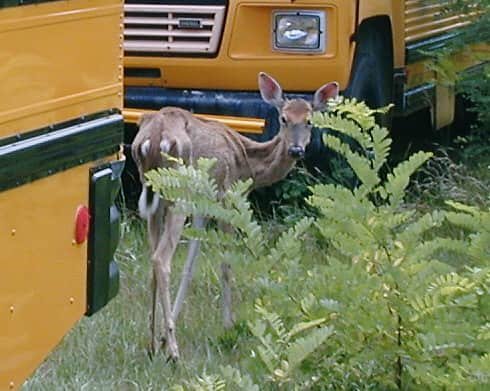CWD Infections Continue to Spread Across North America
OutdoorHub Reporters 02.08.13

State wildlife departments across the country are laying plans to combat the spread of chronic wasting disease.
Chronic wasting disease (CWD) is a disease which leads to the deterioration of brains in deer, moose, and elk, particularly the nervous system. Animals with CWD will become emaciated, exhibit abnormal behavior, suffer loss of bodily functions, and it eventually leads to death of the animal.

As of January 2013 CWD has been found in deer and elk in twenty different states as well as two Canadian provinces. This is up from fourteen States and two Canadian provinces as of August 2008, and just two states prior to the year 2000; the disease has been found for the first time in three states just over the last year: Iowa, Pennsylvania, and Texas.
Additional detection of deer with CWD in 2013 has been reported in Wisconsin, Illinois, and Missouri. You can find a timeline for the spread of CWD in North America here.
If CWD begins to spread, the deer, elk, and moose populations in North America could become destabilized by substantially lowering adult survival rates. In addition to concerns over wildlife, there is a risk that the disease could become a problem for humans as well. There is currently no evidence that CWD is a risk to human health, but in an article by the CDC caution is still urged concerning infected animals:
…to minimize the risk for exposure to the CWD agent, hunters should consult with their state wildlife agencies to identify areas where CWD occurs and continue to follow advice provided by public health and wildlife agencies. Hunters should avoid eating meat from deer and elk that look sick or test positive for CWD. They should wear gloves when field-dressing carcasses, bone-out the meat from the animal, and minimize handling of brain and spinal cord tissues. As a precaution, hunters should avoid eating deer and elk tissues known to harbor the CWD agent (e.g., brain, spinal cord, eyes, spleen, tonsils, lymph nodes) from areas where CWD has been identified.*
It is currently unclear how CWD is spread between animals, and is one of the areas that researchers are investigating. State wildlife departments across the country are working in attempts to manage the emerging problem of CWD, but with no cure currently available officials are limited to containment.
Common visible symptoms of CWD include:
- Emaciation
- Decreased interaction with other animals
- Blank facial expressions
- Walking repeatedly in set patterns
- Hyper excitability
- Excessive salivation
If you think that you have seen a deer, elk, or moose with CWD, contact your state’s wildlife department to report it. Several states have CWD hotlines which you can call to report your sighting.
*Belay ED, Maddox RA, Williams ES, Miller MW, Gambetti P, Schonberger LB. Chronic wasting disease of deer and elk and the species barrier. Emerg Infect Dis [serial on the Internet]. 2004 Jun [date cited]. Available from: http://wwwnc.cdc.gov/eid/article/10/6/03-1082.htm

